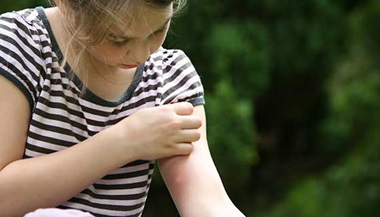Allergen: Insect Stings
The insects that sting
Insects that are members of the Hymenoptera family most commonly cause allergic reactions. These include:
- Bees
- Wasps
- Hornets
- Yellow jackets
- Fire ants
Allergic reactions to insect stings
The reactions are usually at the site of the sting, with redness, swelling, pain and itching. Generally, the reaction lasts only a few hours, although some may last longer.
For some people, allergic reactions to insect stings can be life-threatening. The reaction is called anaphylaxis and can include severe symptoms such as:
- Itching and hives over most of the body
- Swelling of the throat and tongue
- Difficulty breathing and tightness in the chest
- Dizziness
- Headache
- Stomach cramps, nausea, or diarrhea
- Rapid fall in blood pressure
- Shock
- Loss of consciousness
Seek immediate medical attention.
Preventing stings
Preventive measures include:
- Keep food covered when eating outdoors.
- Be careful with open drink bottles, or cans. Insects can fly or crawl inside them.
- Avoid perfumes, hair products, and deodorants.
- Avoid wearing bright, flowered clothing.
- Avoid going barefoot, and wearing sandals in grassy areas.
- When gardening, watch for nests in trees, shrubs, and flower beds.
- Be careful near swimming pools, woodpiles, under eaves of houses, and trash containers.
Treatment for stings
Suggestions for treatment for highly allergic people include:
- Immediately remove the stinger by scraping it with a fingernail. Do not squeeze the stinger, which may force the venom into the body.
- Always carry epinephrine self-injections called Epi-pens. Make sure you and those close to you know how to use them.
- With severe symptoms, get emergency treatment as soon as possible.
Talk with your healthcare provider about getting an epinephrine self-injector if you don't already have one. Ask about whether you need immunotherapy or allergy shots.


